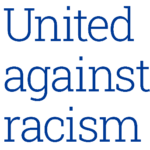Dear Colleagues,
One year ago, Mass General Brigham launched United Against Racism, our systemwide plan for becoming an anti-racist organization. In so doing, I committed our system to a series of specific timelines and metrics of success based on input from staff, leadership and our board.
I also pledged to share regular updates on our progress. While we still have much work ahead of us, the strides we have made over the past year have been impressive. It is with great pride that I share some highlights of your efforts – on behalf of our patients of color – to ensure health equity for all.
Removing Race in Clinical Protocols
Too often in our healthcare systems, a patient’s race has played a role in clinical decision tools and policies. Historically marginalized communities have suffered as a result. As an example, race has traditionally been factored in when calculating eGFR, a measure of how well the kidneys are working. This may have contributed to Black patients with chronic kidney disease being underdiagnosed and undertreated. We recently shifted to a race-free calculation of eGFR. As a result, one in three Black patients are being reclassified to reflect the more severe chronic kidney disease stage they actually face.
Similarly, for years, race and ethnicity were used to determine how likely expectant mothers were to have a successful vaginal birth after previous cesarean delivery. We recently adopted an updated calculator that removes these factors from the equation and as a result all patients regardless of race will have equal opportunity for a successful VBAC. We are also reconsidering 14 other calculators and assessments where race played a role, with more to come.
Increased Screening and Resources to Reduce Health Gaps
We have launched new screenings for food insecurity, housing needs, and other determinants of health across 22 primary care practices as one way to help reduce the impact of structural racism on health. We are also hiring dozens of community health workers in these clinics to connect patients to community resources for unmet health-related social needs.
These efforts will focus on management of diseases with racial and ethnic disparities, including hypertension, diabetes and pediatric asthma. Our work will enhance prevention and early detection of some of the most persistent diseases and conditions facing communities of color.
Improving Access for All Patients
Caring for 1.5 million patients every year, we have a responsibility to dismantle health inequities so that more people can access our programs. To that end, we have hired 11 bilingual digital access coordinators who collectively speak Spanish, Portuguese, Haitian Creole, Arabic, Russian, Mandarin, Cantonese and Cape Verdean Creole. We have also translated our Patient Gateway platform into the languages most commonly spoken by our patients.
Building a Culture of Health Equity Improvement
This year, we asked leaders of hospital departments to identify health inequities in their organizations and apply for grants to address them. We selected and funded 18 grants to reduce racial disparities in patient experience and/or outcomes. This includes everything from reducing disparities in the use of physical restraint in emergency departments to improving access to mental health treatment for non-English speaking trauma survivors.
Mobile Community Care
Some patients are more comfortable in a community setting than in a hospital. Therefore, we have expanded an initiative that began during COVID to bring mobile care into communities. Since May, we have partnered with community organizations to deliver thousands of meals in Chelsea, Revere and other Boston communities. We have also administered as many COVID-19 tests and vaccines.
We plan to build upon this promising model for community care to drive better outcomes in the neighborhoods we serve.
Improving Accuracy of Patient Race, Ethnicity and Language Data
Earlier this year, our system received a National Institutes of Health (NIH) grant to study the long-term effects of COVID-19. A key factor in the NIH’s decision was our systemwide biobank, which combines genetic material from 100,000 patients as well as imaging and electronic medical records. This grant reminds us that data is one of our greatest assets and helps to ensure all our patients receive high-quality care informed by research.
Unfortunately, we lack even the most basic race, ethnicity or language information for many of our patients. So we have begun a major outreach effort to gather this data from 1 million adult primary care patients. Having this information will help us do a much better job of identifying and addressing health disparities.
Enhancing Health Equity Leadership and Accountability
We want to ensure all this work is happening in a coordinated and strategic way. For that reason, this past year we named Elsie Taveras, MD, MPH, as our chief community health equity officer and Allison Bryant, MD, MPH, as senior medical director for health equity. Dr. Taveras and Dr. Bryant are highly respected clinicians with a lifelong dedication to providing all patients with exceptional care. Please watch this video, which highlights our system’s work to develop strategies to improve health equity.
Becoming a Greater Force for Equity and Inclusion
This is an important moment for our organization — and this work is just the beginning. These examples, along with our recent $50 million investment in community and mental health, are just some of the ways that we are making real progress.
In my next update, I will highlight our ongoing efforts to build an anti-racist workforce and develop a more inclusive culture.
I am confident that our efforts will reduce racial disparities in healthcare and establish the culture of health equity improvement we need to meet today’s healthcare challenges.
Anne Klibanski, MD

